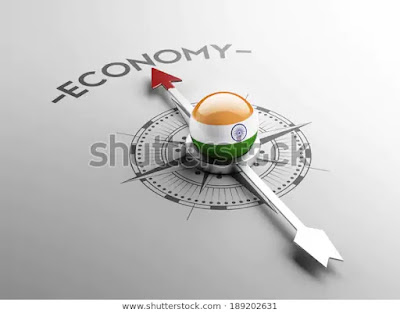The financial advancement in India alludes to the monetary progression of the nation's monetary arrangements, started in 1991 with the objective of making the economy more market-and administration situated, and extending the job of private and remote investment.Most of these progressions were made as a major aspect of the conditions spread out by the World Bank and the IMF as a condition for a $500 million rescue to the Indian government in December 1991. Explicit changes remember a decrease for import duties, deregulation of business sectors, decrease of expenses, and more noteworthy outside speculation.
PRE CHANGE PERIOD
Before the procedure of change started in 1991, the administration endeavored to close the Indian economy to the outside world. The Indian money, the rupee, was inconvertible and high duties and import permitting forestalled remote merchandise arriving at the market. India likewise worked an arrangement of focal getting ready for the economy, in which firms expected licenses to contribute and create. The complex organization regularly prompted ludicrous limitations—up to 80 offices must be fulfilled before a firm could be conceded a permit to create and the state would choose what was delivered, how much, at what cost and what wellsprings of capital were utilized. The administration additionally kept firms from laying off specialists or shutting production lines. The focal mainstay of the arrangement was import substitution, the conviction that India expected to depend on inner markets for improvement, not universal exchange—a conviction created by a blend of communism and the experience of frontier misuse. Arranging and the state, instead of business sectors, would decide how a lot of venture was required in which divisions.
INSOLVENCY
Equalization of Installments emergency in 1991 pushed the nation to approach insolvency. As an end-result of an IMF bailout, gold was moved to London as guarantee, the rupee depreciated and financial changes were constrained upon India. That depressed spot was the impetus required to change the economy through severely required changes to unshackle the economy. Controls began to be destroyed, taxes, obligations, and expenses logically brought down, state restraining infrastructures broken, the economy was opened to exchange and venture, private segment endeavor and rivalry were empowered and globalization was gradually grasped. The changes procedure proceeds with today and is acknowledged by every single ideological group, yet the speed is frequently held prisoner by alliance legislative issues and personal stakes.
Because of the previously mentioned emergency, the Money service drove by, the fund serve Manmohan Singh, started the monetary progression of 1991 with the help of the then Leader Narasimha Rao. The changes got rid of the Permit Raj, decreased taxes and loan costs and finished numerous open restraining infrastructures, permitting programmed endorsement of remote direct interest in numerous parts.
Towards the finish of 2011
The Congress-drove UPA-2 Alliance Government started the presentation of 51% Remote Direct Interest in retail segment
In the early long stretches of 2015
The second BJP-drove NDA Government under Narendra Modi further opened up the protection area by permitting up to 49% FDI
They additionally opened up the coal business through the death of the Coal Mineshafts (Uncommon Arrangements) Bill of 2015.
In the 2016 spending session of Parliament
The Narendra Modi drove BJP Government pushed through the Indebtedness and Liquidation Code. The Code makes time-headed procedures for bankruptcy goals of organizations and people. These procedures will be finished inside 180 days. In the event that indebtedness can't be settled, the benefits of the borrowers might be offered to reimburse lenders.
On July 1, 2017
The BJP-drove NDA Government under Narendra Modi affirmed the Demonstration to Merchandise and Ventures Expense (India).
Stay tuned and subscribed for more details of New Economic Policy 1991





Comments
Post a Comment